This article was co-authored by Catherine Cheung, DPM and by wikiHow staff writer, Jennifer Mueller, JD. Dr. Catherine Cheung is a board certified Podiatrist based in San Francisco, California. Dr. Cheung specializes in all aspects of foot and ankle care, including complex reconstruction. Dr. Cheung is affiliated with the Brown & Toland Physicians and the Sutter Medical Network. She earned a DPM from the California College of Podiatric Medicine, completed her residency at the Encino Tarzana Medical Center, and completed a fellowship at the Kaiser Permanente San Francisco Medical Center. She is board certified by the American Board of Podiatric Surgery.
There are 9 references cited in this article, which can be found at the bottom of the page.
wikiHow marks an article as reader-approved once it receives enough positive feedback. In this case, 80% of readers who voted found the article helpful, earning it our reader-approved status.
This article has been viewed 978,775 times.
Do you have a small, rough growth on your heel or the bottom of your toe? It could be a plantar wart. They usually aren't a serious health concern and typically go away on their own. If you find it embarrassing or uncomfortable, you can usually get rid of it yourself with diligent care. This does take a bit of patience—there aren't really any instant fixes. But if months go by and nothing you try seems to work, see your doctor to explore medical options to remove it.[1]
Steps
Expert Q&A
Did you know you can get premium answers for this article?
Unlock premium answers by supporting wikiHow
-
QuestionWhat if my feet are itchy?
 Catherine Cheung, DPMDr. Catherine Cheung is a board certified Podiatrist based in San Francisco, California. Dr. Cheung specializes in all aspects of foot and ankle care, including complex reconstruction. Dr. Cheung is affiliated with the Brown & Toland Physicians and the Sutter Medical Network. She earned a DPM from the California College of Podiatric Medicine, completed her residency at the Encino Tarzana Medical Center, and completed a fellowship at the Kaiser Permanente San Francisco Medical Center. She is board certified by the American Board of Podiatric Surgery.
Catherine Cheung, DPMDr. Catherine Cheung is a board certified Podiatrist based in San Francisco, California. Dr. Cheung specializes in all aspects of foot and ankle care, including complex reconstruction. Dr. Cheung is affiliated with the Brown & Toland Physicians and the Sutter Medical Network. She earned a DPM from the California College of Podiatric Medicine, completed her residency at the Encino Tarzana Medical Center, and completed a fellowship at the Kaiser Permanente San Francisco Medical Center. She is board certified by the American Board of Podiatric Surgery.
Board Certified Podiatrist If your feet are itchy, it's likely because your feet aren't getting enough air. Try switching to a more breathable set of shoes or sandals. Avoid wearing the same set of shoes two days in a row, and don't wear nylon socks. Take your socks and shoes off when you get home to let your feet get some air. If you have any antifungal powder, sprinkle some in your shoes to see if they stop itching.
If your feet are itchy, it's likely because your feet aren't getting enough air. Try switching to a more breathable set of shoes or sandals. Avoid wearing the same set of shoes two days in a row, and don't wear nylon socks. Take your socks and shoes off when you get home to let your feet get some air. If you have any antifungal powder, sprinkle some in your shoes to see if they stop itching. -
QuestionIs it bad to pick at my own wart?
 Chris M. Matsko, MDDr. Chris M. Matsko is a retired physician based in Pittsburgh, Pennsylvania. With over 25 years of medical research experience, Dr. Matsko was awarded the Pittsburgh Cornell University Leadership Award for Excellence. He holds a BS in Nutritional Science from Cornell University and an MD from the Temple University School of Medicine in 2007. Dr. Matsko earned a Research Writing Certification from the American Medical Writers Association (AMWA) in 2016 and a Medical Writing & Editing Certification from the University of Chicago in 2017.
Chris M. Matsko, MDDr. Chris M. Matsko is a retired physician based in Pittsburgh, Pennsylvania. With over 25 years of medical research experience, Dr. Matsko was awarded the Pittsburgh Cornell University Leadership Award for Excellence. He holds a BS in Nutritional Science from Cornell University and an MD from the Temple University School of Medicine in 2007. Dr. Matsko earned a Research Writing Certification from the American Medical Writers Association (AMWA) in 2016 and a Medical Writing & Editing Certification from the University of Chicago in 2017.
Family Medicine Physician
-
QuestionWhat happens if I try to cut the wart out on my own?
 Chris M. Matsko, MDDr. Chris M. Matsko is a retired physician based in Pittsburgh, Pennsylvania. With over 25 years of medical research experience, Dr. Matsko was awarded the Pittsburgh Cornell University Leadership Award for Excellence. He holds a BS in Nutritional Science from Cornell University and an MD from the Temple University School of Medicine in 2007. Dr. Matsko earned a Research Writing Certification from the American Medical Writers Association (AMWA) in 2016 and a Medical Writing & Editing Certification from the University of Chicago in 2017.
Chris M. Matsko, MDDr. Chris M. Matsko is a retired physician based in Pittsburgh, Pennsylvania. With over 25 years of medical research experience, Dr. Matsko was awarded the Pittsburgh Cornell University Leadership Award for Excellence. He holds a BS in Nutritional Science from Cornell University and an MD from the Temple University School of Medicine in 2007. Dr. Matsko earned a Research Writing Certification from the American Medical Writers Association (AMWA) in 2016 and a Medical Writing & Editing Certification from the University of Chicago in 2017.
Family Medicine Physician
Warnings
- Avoid touching the wart directly or picking at it—you can spread the virus and end up with more warts. If you do accidentally touch it, wash your hands immediately.[19]⧼thumbs_response⧽
- Some skin cancers look like warts when they first appear. If your wart changes in size, color, or shape, bleeds, or grows quickly, see a specialist to have it tested.[20]⧼thumbs_response⧽
- If you have diabetes or a weakened immune system, see your doctor rather than attempting self-care methods.[21]⧼thumbs_response⧽
- Even after the wart goes away, you may still have the virus in your skin—which means you might get another wart years later. Practicing good foot hygiene helps prevent this.[22]⧼thumbs_response⧽
- Don't ignore any growths or changes to the skin on your feet—some might not be benign like plantar warts. Seek medical advice if you're concerned.[23]⧼thumbs_response⧽
References
- ↑ https://www.mayoclinic.org/diseases-conditions/plantar-warts/symptoms-causes/syc-20352691
- ↑ https://www.health.harvard.edu/diseases-and-conditions/how-to-get-rid-of-warts
- ↑ https://www.mayoclinic.org/diseases-conditions/plantar-warts/diagnosis-treatment/drc-20352697
- ↑ Catherine Cheung, DPM. Board Certified Podiatrist. Expert Interview. 21 April 2019.
- ↑ https://www.aad.org/public/diseases/a-z/warts-heal
- ↑ https://www.health.harvard.edu/diseases-and-conditions/how-to-get-rid-of-warts
- ↑ https://www.aad.org/public/diseases/a-z/warts-heal
- ↑ https://www.health.harvard.edu/diseases-and-conditions/how-to-get-rid-of-warts
- ↑ https://www.mayoclinic.org/diseases-conditions/plantar-warts/diagnosis-treatment/drc-20352697
- ↑ https://www.ncbi.nlm.nih.gov/pmc/articles/PMC6002322/
- ↑ https://www.mayoclinic.org/diseases-conditions/plantar-warts/diagnosis-treatment/drc-20352697
- ↑ https://www.iowaclinic.com/primary-care/best-ways-get-rid-plantar-warts/
- ↑ https://www.mayoclinic.org/diseases-conditions/plantar-warts/diagnosis-treatment/drc-20352697
- ↑ https://www.iowaclinic.com/primary-care/best-ways-get-rid-plantar-warts/
- ↑ https://health.clevelandclinic.org/weird-wart-home-remedies-and-what-works/
- ↑ https://www.aad.org/public/diseases/a-z/warts-self-care
- ↑ https://www.mayoclinic.org/diseases-conditions/plantar-warts/diagnosis-treatment/drc-20352697
- ↑ https://www.aad.org/public/diseases/a-z/warts-heal
- ↑ https://www.aad.org/public/diseases/a-z/warts-heal
- ↑ https://www.health.harvard.edu/diseases-and-conditions/how-to-get-rid-of-warts
- ↑ https://www.mayoclinic.org/diseases-conditions/plantar-warts/symptoms-causes/syc-20352691
- ↑ https://www.health.harvard.edu/diseases-and-conditions/how-to-get-rid-of-warts
- ↑ Catherine Cheung, DPM. Board Certified Podiatrist. Expert Interview. 21 April 2019.
About This Article
To get relief from a wart on the bottom of your foot, try rubbing the wart down with a pumice stone after soaking it in warm water for 15-20 minutes. You can also gradually strip away the callous and underlying wart by applying salicylic acid treatments over several days. For a more natural alternative, put some apple cider vinegar on a cotton ball and use a bandage to keep it on the wart overnight for several days in a row. However, keep in mind that there’s not a lot of scientific evidence that apple cider vinegar can help with warts. Scroll down for more advice from our Medical co-author, including how to get medical treatment for your wart!
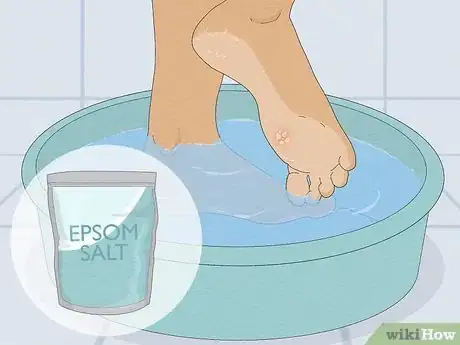
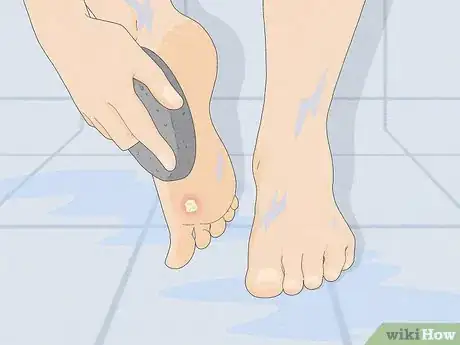



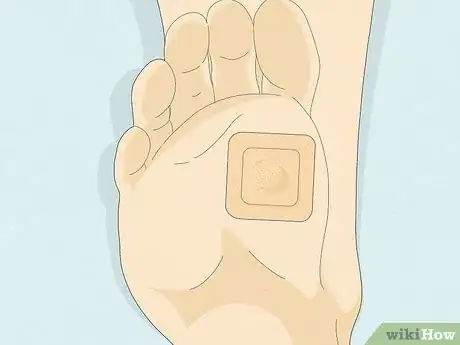
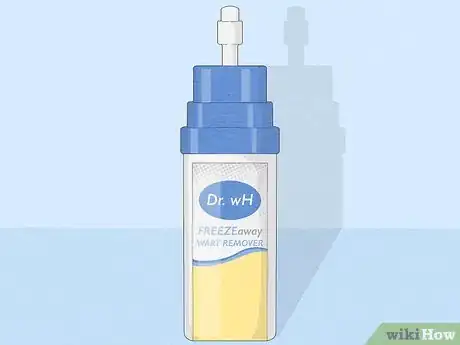
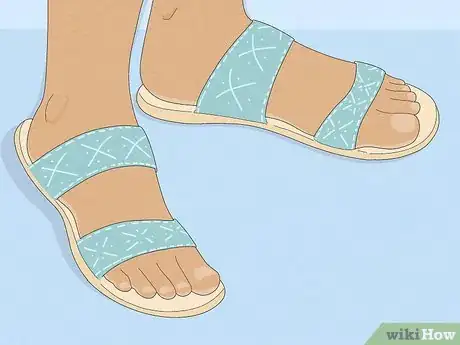
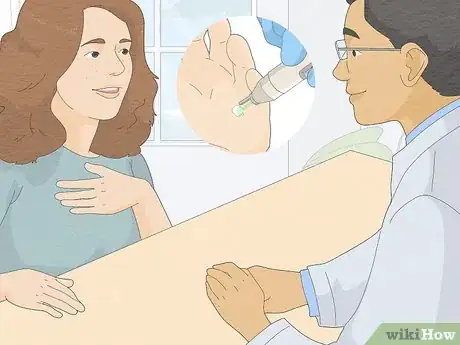
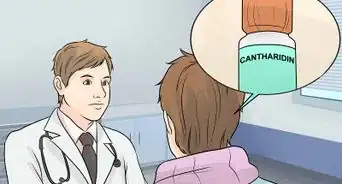
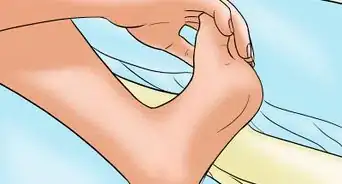
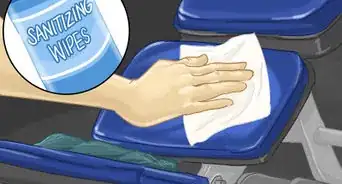
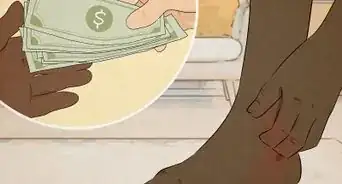
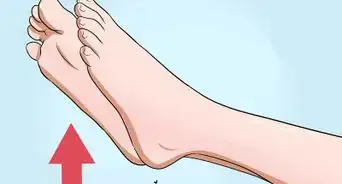



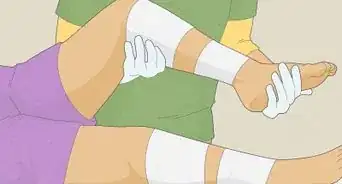
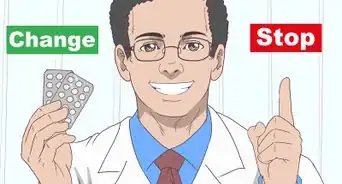















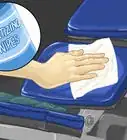
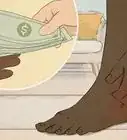



































Medical Disclaimer
The content of this article is not intended to be a substitute for professional medical advice, examination, diagnosis, or treatment. You should always contact your doctor or other qualified healthcare professional before starting, changing, or stopping any kind of health treatment.
Read More...